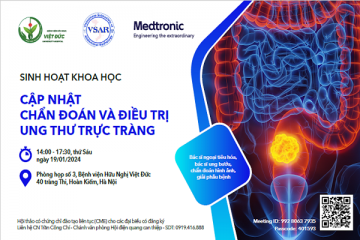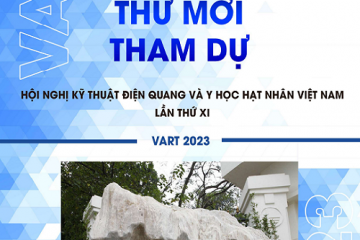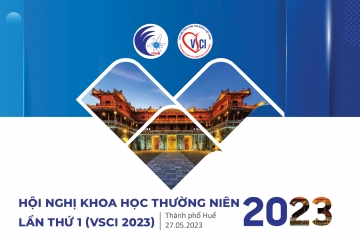
Kết quả ban đầu can thiệp nội mạch điều trị hẹp tắc mạn tính động mạch vùng dưới gối
03/04/2020 10:12:50 | 0 binh luận
Short-term results of endovascular intervention in the treatment below-the-knee chronic arterial occlusion SUMMARY Purpose : evaluation of short-term results of endovascular intervention in treatment of below-the-knee chronic arterial occlusion. Method and materials: Prospective studies, group of 32 patients with critical limb ischemia due to peripheral arterial diseases were admitted Bach Mai hospital from 9/2011 to 8/2012. The follow up mean times is 6.5 months. Results: 32 patients with 65 arteries were treated by endovascular intervention. Pre-procedure’s ABI is 0.64±0.19. The length of lesion is 171.6 ± 32.5 mm. There is 13.3 % retrograde arterial access at tibial arteries in combination with antergrade access at CFA. Subintimal angioplasty rate is 84.8%. The overall technical success rate is 81.5%. Post-procedure, the along arterial pain is 87.5% with mean duration is 4.5 days, the soft tissue edema rate because of arterial congestion is 30% with mean duration 7.5 days. The fi rst week post-procedure ABI is 0.84±0.22. In the follow up duration, the re-intervention is 9.2%, overall limb salvation is 87.5%. Conclusion : endovascular intervention of arterial chronic occlusion is minimal invasive, safety and effective in revascularization of BTK regions, it has important role in reducing the amputation rate of lower limbs.
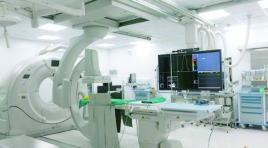
Kết quả bước đầu ứng dụng angio CT trong can thiệp nội mạch tại Vinmec Time City
17/03/2020 10:37:35 | 0 binh luận
The initial result of vascular interventional application with angio ct in vinmec times city SUMMARY Purpose : Evaluating the initial result of vascular interventional application with Angio-CT hybrid system in Vinmec Times City radiology department. Material and Method : From Nov 2018 to May 2019, we applied vascular intervention for 93 patients including TACE, SIRT for HCC; intraarterial chemotherapy for retinoblastoma; cerebral vascular intervention, bleeding GI intervention; uterine fibroid embolization and benign prostatic hypertrophy embolization, bronchial artery embolization… Result and discussion : Angio-CT hybrid system save time move patient between from CT rom to vascular intervention room, high-contrast resolution, large FOV, minimal artefacts due to motion or metals. Conclusion: Angio-CT hybrid system application in vascular interventional help us diagnosis and quickly make a vascular interventional decision, improve many techniques, increase accuracy and confidence when deciding to intervene, limit unwanted complications due to limitations on observation on DSA alone. Key words: Angio CT hybrid system, Angio CT in vascular interventional application.
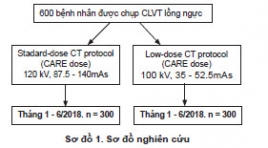
Ứng dụng phương pháp chụp cắt lớp vi tính đa dãy lồng ngực liều thấp tại Trung tâm Điện quang Bệnh viện Bạch Mai, năm 2018
18/12/2019 09:50:57 | 0 binh luận
Applicaton of lung low dose scan on msct system Bach Mai radiology center, 2018 SUMMARY Summary: Target (main point, purpose of this reseach); Standard dose CT ( SDCT) has been one of the most valuable techniques in term of diagnosing lung diseases. But it also have side effect that huge radiation dose is absorbed to patients body; In order to reduce this side effect is low dose CT scan (LDCT); LDCT help patients reduce radiation dose absorb to their body. Subject: 300 patients with SDCT scan: 120 kV, 87.5 - 140mAs; 300 patients with LDCT scan: 100 kV, 35-52.5 mAs. Hitachi CT 128 slices System. Evaluate image quality, dose information( CTDI vol, DLP, Effective dose) of two group Result : Effective dose: SDCT: 120kV, 87,5-140mAs and LDCT: 100kV, 35-52.5mAs => LDCT reduce 2,5 time compare to SDCT; Absorded dose CTDI vol of LDCT: 2,3 + - 0.5 mAs à reduce by 60% compare to SDCT (P<0,001); DLP of LDCT: 80+- 159.99 mGy.cm à reduce by 65% compare to SDCT ( P<0.001). Quality of image: both are the same and enough for diagnose Conclusion: Absorbed dose and effective dose of LDCT are reduce significantly. The image quality are still have enough value for diagnose. Key words : CT reduces the dose of rays; Low-dose chest CT; Pulmonary nodule; Risk factors for lung nodules.
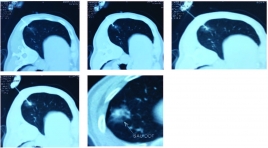
Đánh giá hiệu quả can thiệp nội mạch trong điều trị phình mạch tạng sau chấn thương
17/12/2019 09:40:53 | 1 binh luận
To evaluate the effectiveness of endovascular intervention for treatment of traumatic visceral pseudoaneurysms SUMMARY Background: Visceral pseudoaneurysm was rare condition, its complication of bleeding led to severe clinical scenario, causing blood loss shock and death. Surgery was an invasive treatment and had high rate of morbidity and mortality; therefore, endovascular intervention has gradually becoming an alternative treatment nowadays. Objectives: To evaluate the safety and effectiveness of endovascular treatment in patients with traumatic visceral pseudoaneurysms. Materials and Methods : All patients were diagnosed of traumatic visceral pseudoaneurysm and treated by endovascular intervention at Cho Ray Hospital from October 2017 to February 2019. Results: Thirty (30) patients were enrolled in this study. Locations of pseudoaneurysm were as follows: hepatic arteries (22.2%), gastroduodenal arteries (5.6%), renal arteries (55.5%), splenic arteries (8.3%), superior mesenteric arteries (5.6%) and left gastric arteries (2.8%). The embolic agents included Histoacryl glue (NCBA) (6%), coils (82%), PVA particles + coils (6%) and gelfoam + coils (6%). 94.4% of pseudoaneurysms were completely embolized, and 90% of patients recovered of clinical status at discharge. No severve complications were reported and the most common complication was hematoma (5%) at puncture site. Conclusion : Endovascular treament is an effective and safe method in the management of traumatic visceral pseudoaneurysms. Keywords: traumatic visceral pseudoaneurysm, endovascular treatment, safety, effectiveness
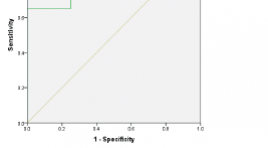
Giá trị của cộng hưởng từ phổ và cộng hưởng từ tưới máu trong chẩn đoán phân bậc u sao bào
05/12/2019 09:27:25 | 0 binh luận
Value of mr spectroscopy and perfusion in the grading of astrocytomas SUMMARY Objectives : The purpose of this study was to determine the value of MR spectroscopy and perfusion in the grading of astrocytomas. Methods: A descriptive study, retrospective and prospective study, MR spectroscopy and perfusion in 27 patients with histopathological findings of astrocytomas from 01/2016 to 07/2018 at the Viet Duc University Hospital. Evaluate the relationship between concentration of metabolics Cho, Cr, NAA, Cho/NAA, Cho/Cr, NAA/Cr; rCBV and grading of astrocytomas. Results : The Cho/NAA and Cho/Cr ratios of the high-grade astrosytomas and low-grade astrocytomas were statistically significant (p <0.05). The Cho/NAA ratio is useful in the diagnosis grade of astrocytomas. At the cutoff point of 2.22 for Cho/NAA ratio, MRS has sensitivity of 95%, specificity of 100%, positive predictive value of 100%, negative predictive value of 80% for grading of astrocytomas. The rCBV index is valuable in the differential diagnosis grade of astrocytomas with the mean value of rCBV in the high-grade astrocytomas is higher than low-grade astrocytomas, there is a statistically significant difference of rCBV between the two groups. At the cutoff point of2.55 for rCBV, perfusion has sensitivity 81%, specificity 100%, positive predictive value 100%, negative predictive value 50%for grading of astrocytomas. Conclusion : MR spectroscopy and perfusion are valuable for grading of astrocytomas. Key words : MR spectroscopy,
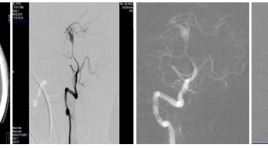
Điều trị phình động mạch não vỡ sau chấn thương bằng can thiệp nội mạch tại Bệnh viện Chợ Rẫy
04/12/2019 21:40:31 | 0 binh luận
Endovascular treatment of reptured traumatic cerebral aneurysm after brain injury in choray hospital SUMMARY Background: Traumatic intracranial aneurysms are rare, comprising 1% or less of all cerebral aneurysms. They can occur after even mild or severe head trauma, and are associated with significant morbidity and a mortality rate as high as 50%. Causes of pathogenesis, pathology and treatment methods differ from other cerebral aneurysms. So, the purpose of endovascular treatment is to prevent rebleeding and progressive cerebral dissecting anurysms. Materials and methods : Endovascular treatment of ruptured traumatic cerebral artery aneurysms performed at Department of Radiology, Choray Hospital, from 01/2017 to 05/2018, the technique as follows: digital subtraction angiography, inserting of microcatheter over the aneurysm neck and other microcatheter insert to aneurysm, deploying stent over the aneurysm neck and coiling into aneurysm. The efficacy and safety were evaluated by variants: complete and partial occlusion rates, procedural success rate, clinical improvement, procedural complication. Results: 33 cases of ruptured traumatic cerebral aneurysms treated by endovascular treatment, technical success rate 31/33 (93.9%) with stent assisted coiling (72.7%), parent artery occlusion (15.2%) and alone coiling (6.1%). Good outcome m-RS (0-2) were 25/33 cases (75.7%) , 5/33 cases (15.2%) reruptered and progressive cerebral dissecting anurysm cause mortality rates 3 cases (9.1%), morbidity rate (15.2%). Conclusion : Endovascular treatment of ruptured traumatic cerebral aneurysms after brain injury were high safety and efficiency, improve good outcomes, low mortality complication rates. Key words: Traumatic cerebral aneurysms, Stent assisted coiling, endovascular treatment.
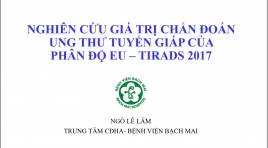
Nghiên cứu giá trị chẩn đoán ung thư tuyến giáp của phân độ EU - TIRADS 2017
16/04/2020 23:13:02 | 0 binh luận
Research into the value in the diagnosis of thyroid cancerof the EU-TIRADS 2017 classification SUMMARY A diagnostic test study was conducted at Bạch Mai hospital to evaluate the efficacy of Ultrasound andthe EU-TIRADS 2017classsification of thyroid nodules. Result : 170 patients with thyroid noduleswere prospectively evaluated by B-mode ultrasound and the EU-TIRAD 2017 classsification, followed by the fine needle aspiration (FNA) biopsy. The averae age is 46,7 ± 11,5 years old and female/male = 5,5. The sensitivity, specificity, positive predictive value, negative predictive value, accuracy for the EUTIRADS 2017 were 98,2%; 34,5%; 74,3%; 90,9%; 76,7%.TIRADS 5 is the highest (64,7%). 4 features of high suspicion are irregular margins, microcalfifcations, marked hypoechogenicity, “taller – then -wide” shape; the sensitivity, specificity 70% and 93%; 35% and 91%; 50% and 79%; 58% and 82%. Conclusion: TIRADS 5 is the highest and the EU-TIRADS 2017 classification and pathology indicates strong evidence. Key Words : The EU-TIRADS 2017, thyroid nodules on ultrasound, thyroidcancer.
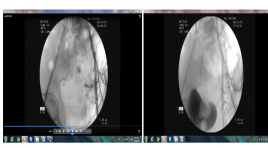
Bước đầu áp dụng thuyên tắc mạch vùng chậu điều trị chảy máu thứ phát sau cắt tử cung, ung thư cổ tử cung tại bệnh viện Trung ương Huế nhân 6 trường hợp
23/05/2020 11:15:40 | 0 binh luận
Applications of pelvic embolization in bleeding after hysterectomy, cervical cancer in hue central hospital: a six cases series SUMMARY Background: When conservative management cannot control a postpartum hemorrhage, cervical cancer hemorrhage, a surgical or interventional approach is usually the next line of treatment. If the above techniques fail to control the bleeding, then a hysterectomy is indicated. Bleeding after hysterectomy will likely require the use of interventional radiology therapy [2]. Patient and Method: Six patients were performed the transcatheter arterial embolization (TAE) in Hue central hospital from 10 /2011 to 10 /2013, 6 cases had extravasation. Conclusion: Applications of pelvic embolization is an effective and safe therapeutic method, it can be widely apply. Key words: Pelvic embolization.
Bạn Đọc Quan tâm
Sự kiện sắp diễn ra
Thông tin đào tạo
- Những cạm bẫy trong CĐHA vú và vai trò của trí tuệ nhân tạo
- Hội thảo trực tuyến "Cắt lớp vi tính đếm Photon: từ lý thuyết tới thực tiễn lâm sàng”
- CHƯƠNG TRÌNH ĐÀO TẠO LIÊN TỤC VỀ HÌNH ẢNH HỌC THẦN KINH: BÀI 3: U não trong trục
- Danh sách học viên đạt chứng chỉ CME khóa học "Cập nhật RSNA 2021: Công nghệ mới trong Kỷ nguyên mới"
- Danh sách học viên đạt chứng chỉ CME khóa học "Đánh giá chức năng thất phải trên siêu âm đánh dấu mô cơ tim"









